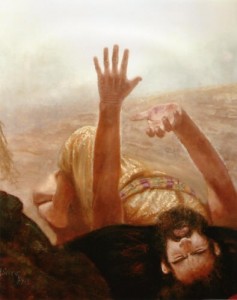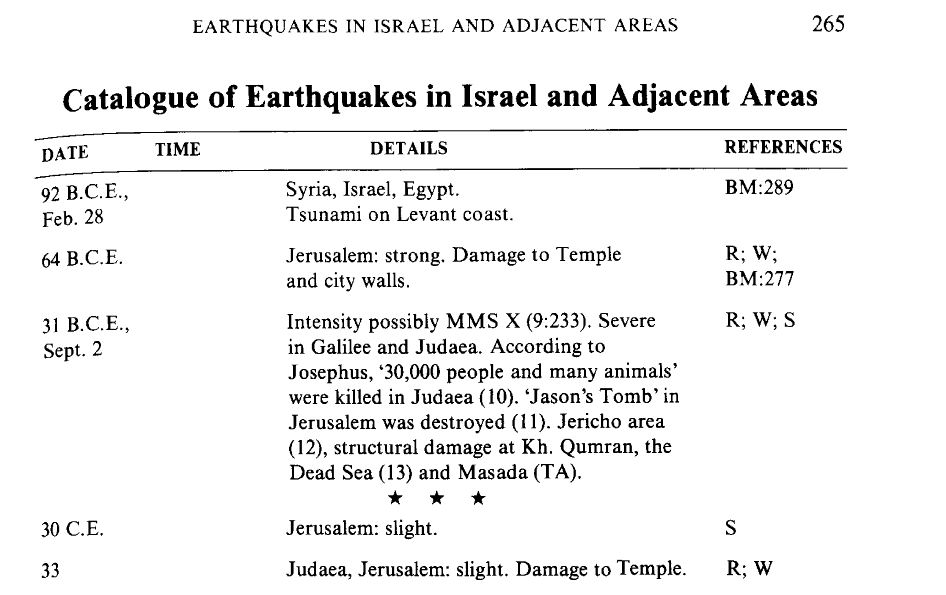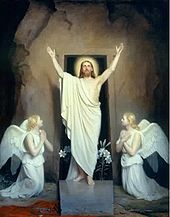 The conversion of Paul is an extremely perplexing fact of history for skeptics. Paul was an ardent opponent of Christianity and had everything to gain by destroying its claims. He persecuted the early Christians with zeal and thought he was serving God. When someone must confess such a drastic error in embarrassing detail, it is not likely they are fabricating their testimony. Accordingly, the testimony of a hostile witness is considered extremely convincing in a court of law. For these reasons skeptics have concocted fanciful theories such as Paul suffering from temporal lobe epilepsy[1] or conversion disorder.[2] Yet these desperate attempts do not account for the evidence of Jesus’ empty tomb or the eye witness testimony of the disciples or the appearance to and conversion of the once skeptical brother James. Paul was not in the frame of mind to hallucinate the risen Jesus and he does not fit the medical profile of someone who is likely to experience conversion psychosis. For this reason skeptics seek to nitpick at the details in Acts to derive contradictions.
The conversion of Paul is an extremely perplexing fact of history for skeptics. Paul was an ardent opponent of Christianity and had everything to gain by destroying its claims. He persecuted the early Christians with zeal and thought he was serving God. When someone must confess such a drastic error in embarrassing detail, it is not likely they are fabricating their testimony. Accordingly, the testimony of a hostile witness is considered extremely convincing in a court of law. For these reasons skeptics have concocted fanciful theories such as Paul suffering from temporal lobe epilepsy[1] or conversion disorder.[2] Yet these desperate attempts do not account for the evidence of Jesus’ empty tomb or the eye witness testimony of the disciples or the appearance to and conversion of the once skeptical brother James. Paul was not in the frame of mind to hallucinate the risen Jesus and he does not fit the medical profile of someone who is likely to experience conversion psychosis. For this reason skeptics seek to nitpick at the details in Acts to derive contradictions.
I have charted the three accounts of Paul’s conversion and color coded the key parallel phrases as a means to demonstrate the basic consistency of the accounts. Paramount is to note the context of each passage. The first (Acts 9:1–19) is told by the narrator Luke. The second version (22:3-16) is told in Paul’s own words after he was arrested at the temple and taken to the barracks. The third is Paul’s testimony before King Agrippa. Accordingly the first has detail Paul would be unaware of like Ananias’ commission from God. The second and third have more detail in the message from Jesus to Paul reflecting the first person. From my arrangement and color coding it is readily apparent that the basic account is the same and that the minor discrepancies are merely the normal variations found when someone recalls an important event. They also reflect the contextual emphasis based on the setting.
| Acts 9:1-19 | Acts 22:3–16 | Acts 26:8–19 |
| 1 But Saul, still breathing threats and murder against the disciples of the Lord, went to the high priest
2 and asked him for letters to the synagogues at Damascus, so that if he found any belonging to the Way, men or women, he might bring them bound to Jerusalem.
|
3 “I am a Jew, born in Tarsus in Cilicia, but brought up in this city, educated at the feet of Gamaliel according to the strict manner of the law of our fathers, being zealous for God as all of you are this day.
4 I persecuted this Way to the death, binding and delivering to prison both men and women, 5 as the high priest and the whole council of elders can bear me witness. From them I received letters to the brothers, and I journeyed toward Damascus to take those also who were there and bring them in bonds to Jerusalem to be punished.
|
8 Why is it thought incredible by any of you that God raises the dead? 9 “I myself was convinced that I ought to do many things in opposing the name of Jesus of Nazareth. 10 And I did so in Jerusalem. I not only locked up many of the saints in prison after receiving authority from the chief priests, but when they were put to death I cast my vote against them. 11 And I punished them often in all the synagogues and tried to make them blaspheme, and in raging fury against them I persecuted them even to foreign cities. 12 “In this connection I journeyed to Damascus with the authority and commission of the chief priests. |
| 3 Now as he went on his way, he approached Damascus, and suddenly a light from heaven flashed around him.
4 And falling to the ground he heard a voice saying to him, “Saul, Saul, why are you persecuting me?” 5 And he said, “Who are you, Lord?” And he said, “I am Jesus, whom you are persecuting. 6 But rise and enter the city, and you will be told what you are to do.” 7 The men who were traveling with him stood speechless, hearing the voice but seeing no one. 8 Saul rose from the ground, and although his eyes were opened, he saw nothing. So they led him by the hand and brought him into Damascus. 9 And for three days he was without sight, and neither ate nor drank. 10 Now there was a disciple at Damascus named Ananias. The Lord said to him in a vision, “Ananias.” And he said, “Here I am, Lord.” 11 And the Lord said to him, “Rise and go to the street called Straight, and at the house of Judas look for a man of Tarsus named Saul, for behold, he is praying, 12 and he has seen in a vision a man named Ananias come in and lay his hands on him so that he might regain his sight.” 13 But Ananias answered, “Lord, I have heard from many about this man, how much evil he has done to your saints at Jerusalem. 14 And here he has authority from the chief priests to bind all who call on your name.” 15 But the Lord said to him, “Go, for he is a chosen instrument of mine to carry my name before the Gentiles and kings and the children of Israel. 16 For I will show him how much he must suffer for the sake of my name.”
|
6 “As I was on my way and drew near to Damascus, about noon a great light from heaven suddenly shone around me.
7 And I fell to the ground and heard a voice saying to me, ‘Saul, Saul, why are you persecuting me?’ 8 And I answered, ‘Who are you, Lord?’ And he said to me, ‘I am Jesus of Nazareth, whom you are persecuting.’ 9 Now those who were with me saw the light but did not understand the voice of the one who was speaking to me. 10 And I said, ‘What shall I do, Lord?’ And the Lord said to me, ‘Rise, and go into Damascus, and there you will be told all that is appointed for you to do.’ 11 And since I could not see because of the brightness of that light, I was led by the hand by those who were with me, and came into Damascus.
|
13 At midday, O king, I saw on the way a light from heaven, brighter than the sun, that shone around me and those who journeyed with me. 14 And when we had all fallen to the ground, I heard a voice saying to me in the Hebrew language, ‘Saul, Saul, why are you persecuting me? It is hard for you to kick against the goads.’ 15 And I said, ‘Who are you, Lord?’ And the Lord said, ‘I am Jesus whom you are persecuting. 16 But rise and stand upon your feet, for I have appeared to you for this purpose, to appoint you as a servant and witness to the things in which you have seen me and to those in which I will appear to you, 17 delivering you from your people and from the Gentiles—to whom I am sending you 18 to open their eyes, so that they may turn from darkness to light and from the power of Satan to God, that they may receive forgiveness of sins and a place among those who are sanctified by faith in me.’ 19 “Therefore, O King Agrippa, I was not disobedient to the heavenly vision.
|
| 17 So Ananias departed and entered the house. And laying his hands on him he said, “Brother Saul, the Lord Jesus who appeared to you on the road by which you came has sent me so that you may regain your sight and be filled with the Holy Spirit.”
18 And immediately something like scales fell from his eyes, and he regained his sight. Then he rose and was baptized; 19 and taking food, he was strengthened. For some days he was with the disciples at Damascus.
|
12 “And one Ananias, a devout man according to the law, well spoken of by all the Jews who lived there,
13 came to me, and standing by me said to me, ‘Brother Saul, receive your sight.’ And at that very hour I received my sight and saw him. 14 And he said, ‘The God of our fathers appointed you to know his will, to see the Righteous One and to hear a voice from his mouth; 15 for you will be a witness for him to everyone of what you have seen and heard. 16 And now why do you wait? Rise and be baptized and wash away your sins, calling on his name.’
|
The coherence is much more significant than the minor variations. It is consistent that Paul was persecuting the Christians and in that duty he was approaching Damascus when he was suddenly enveloped by a blinding bright light. He heard a voice but his traveling companions only heard a sound. Skeptics make much of the fact that 9:7 says they heard the voice but 22:9 reads that, “they heard not the voice” in the old King James.[3] This is merely a case of an unfortunate translation choice on the part of the KJV. While the Greek term, ἀκούω, can be rendered “hear”, it is also is used for “understand” or “comprehend” as in the case of Mark 4:33.[4] Modern translations reflect this rendering. While the atheist Dan Barker has criticized this as unjustifiable[5], the alleged contradiction seems drastically overstated because it is entirely possible to hear and not understand. Furthermore, in the third account (Acts 26:8–19), Paul supplies an additional detail that the voice spoke in Hebrew. Perhaps it is as simple as the fact his companions did not comprehend Hebrew?
The details that are consistent are far more significant. Paul fell to the ground and heard Jesus asking him why he was persecuting Him. While the third account to Agrippa presents a general summary of Paul’s commission, the other two give more detail. Jesus told him to travel onto Damascus where he would be told what to do. Blinded, he was led to the city by his companions where he fasted for three days. The first account provides the details about Ananias, who God had convinced to encourage and heal Paul. Paul was healed, converted and baptized and began to preach in Damascus. According to his writing in Galatians, Paul then spent some time in alone in the Arabian Desert. I suspect he studied the Old Testament prophecies like Isaiah 53 and developed his theology. He also may have received additional revelation from the Lord during that time.[6] The results are self-evident in his composition of nearly half the New Testament.
Let’s say I am on a jury hearing your case. If your mother says you are a wonderful person and can be trusted, I still would have my doubts. However, if someone who dislikes you testified that you were honest, I would be inclined to think you trustworthy. The conversion of an enemy is powerful evidence. Even more, what could be more convincing than the complete turn around of an educated and skillful opponent with nothing to gain? Paul had everything to lose by converting yet the historical record is clear and undisputed. Paul went from persecutor to preacher of the Gospel. The only adequate explanation is that he met the risen Lord.
[1] D Landsborough, “St Paul and temporal lobe epilepsy,” J Neurol Neurosurg Psychiatry.;50, no. 6 (June 1987): 659–664.
[2] Gary R. Habermas and Michael Licona, The Case for the Resurrection of Jesus (Grand Rapids, MI: Kregel Publications, 2004), 114.
[3] Skeptics Annotated Bible http://skepticsannotatedbible.com/acts/9.html compared with http://skepticsannotatedbible.com/acts/22.html (accessed 5/18/2011).
[4]James Swanson, Dictionary of Biblical Languages With Semantic Domains : Greek (New Testament), electronic ed. (Oak Harbor: Logos Research Systems, Inc., 1997), DBLG 201, #8.
[5] Dan Barker, Godless: How an Evangelical Preacher Became One of America’s Leading Atheists. (Berkely: Ulysses Press, 2009), 246–50.
[6]Thomas D. Lea and David Alan Black, The New Testament : Its Background and Message, 2nd ed. (Nashville, Tenn.: Broadman & Holman Publishers, 2003), 296.






